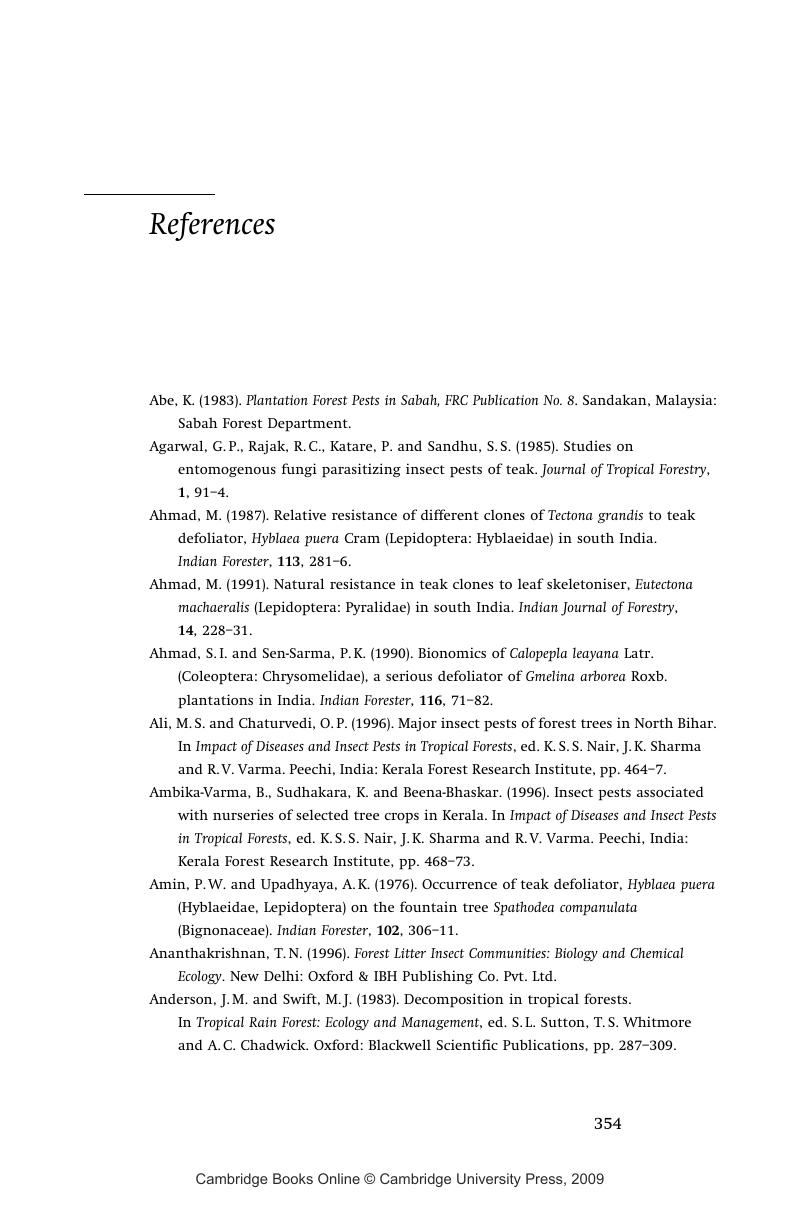Book contents
- Frontmatter
- Contents
- List of illustrations
- Preface
- Foreword
- 1 Forestry in the tropics
- 2 An overview of tropical forest insects
- 3 Ecology of insects in the forest environment
- 4 Insect pests in natural forests
- 5 Insect pests in plantations: General aspects
- 6 Insect pests of stored timber
- 7 Population dynamics: What makes an insect a pest?
- 8 Some general issues in forest entomology
- 9 Management of tropical forest insect pests
- 10 Insect pests in plantations: Case studies
- References
- Index
- References
References
Published online by Cambridge University Press: 14 August 2009
- Frontmatter
- Contents
- List of illustrations
- Preface
- Foreword
- 1 Forestry in the tropics
- 2 An overview of tropical forest insects
- 3 Ecology of insects in the forest environment
- 4 Insect pests in natural forests
- 5 Insect pests in plantations: General aspects
- 6 Insect pests of stored timber
- 7 Population dynamics: What makes an insect a pest?
- 8 Some general issues in forest entomology
- 9 Management of tropical forest insect pests
- 10 Insect pests in plantations: Case studies
- References
- Index
- References
Summary

- Type
- Chapter
- Information
- Tropical Forest Insect PestsEcology, Impact, and Management, pp. 354 - 392Publisher: Cambridge University PressPrint publication year: 2007



